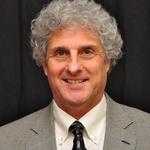
11 Jul Infants Are Lips Experts With Prominent Neural Map of Lips
MedicalResearch.com Interview with:
Andrew N. Meltzoff Ph.D.
Job and Gertrud Tamaki Endowed Chair
Co-Director, Institute for Learning & Brain Sciences (I-LABS)
Professor of Psychology
Elected member of the American Academy of Arts & Sciences.
University of Washington, Box 357920
Seattle, WA 98195
MedicalResearch.com: What is the background for this study? What are the main findings?
Response: We are applying safe, noninvasive neuroscience techniques to examine the development of young children. We are especially interested in social-emotional learning and cognitive development. The way the body is represented in the brain is well-studied topic in cognitive neuroscience using adults, for example, the classical studies by W. Penfield on the ‘sensorimotor homunculus’ in the adult brain. The development of neural body map in human infants is, however, deeply understudied.
We think that the way the body is represented in the brain will provide important information about infant learning prior to language. For example, one of the chief avenues of learning in human infants is through observation and imitation. Infants watch what adults do and imitate those behaviors, rapidly learning about people, things, and causal relations. The mechanisms of imitation themselves are interesting. In order to imitate, infants need to know what part of their body to move and how to move it. We wanted to explore the representations of the human body in the infant brain prior to language.
MedicalResearch.com: What should readers take away from your report?
Response: We used EEG to explore infant neural responses to touch. We tested 60-day-old infants. We touched three different parts of the infants’ body—the left hand, left foot, and the middle of the lip. As predicted from adult neuroscience studies, we found a significant increase in brain activity over the sensorimotor cortex when infants were touched. We also discovered a distinctive neural signature to touching each of these body parts. There was increased brain activity on one side of the brain when the hand was touched, midline activity for the foot, and very strong bilateral activity when the lip was touched. This makes sense given the work showing an orderly, somatotopic representation of the body in adults.
It is interesting that there was such a prominent response to touching the lips. This may be due to the fact that infants have a good deal of motor practice with their lips for sucking. It might also reflect an evolutionary adaption for language, because infants will eventually use their lips to articulate speech, which takes exquisite control of the lips and tongue. There may already be a ‘cortical magnification’ of the lip region in 60-day-old infants. Within the first two months of life, infants are already lip experts and seem to have a neural body map that includes a prominent representation of lips.
MedicalResearch.com: What recommendations do you have for future research as a result of this work?
Response: We are interested in how the body map changes with experience—neuroplasticity. We will be studying whether there are changes in the hand representation as infants begin to use the pincer grip to manipulate objects, changes in the foot representation as they begin to walk, and transformation in the lip representation as infants begin to speak, using their articulators to rapidly and accurately produce the consonants and vowels of spoken words.
It is also intriguing to think about how neural body maps may contribute to social-cognitive development. We examining how body representations help support preverbal imitative learning in infants. At a more theoretical level, we are exploring how the neural representation of infants’ own bodies contribute to infants’ understanding of other people. Infants seem to pay particular attention to the movements of others “like me.” What is the basis of these preverbal “like me” perceptions? One possibility is that the social perception draws on infants’ neural representation of themselves. If so, this opens the possibility of longitudinal studies combining brain and behavior to examine the growth of social perception. We speculate that infants’ representation of bodies—their own and those of other people—may be a fundamental building block for the growth of social cognition. This conjecture is propelling us to design new studies combining infant brain science (EEG, MEG) and behavior.
MedicalResearch.com: Is there anything else you would like to add?
Response: My collaborators on this project are Dr. Jony Saby, postdoctoral fellow in the Department of Radiology, Children’s Hospital of Philadelphia, and Dr. Peter Marshall, Chair, Department of Psychology, Temple University, Philadelphia. Peter and Joni are experts in early brain functioning and EEG.
No disclosures.
Citation:
Andrew N. Meltzoff, Joni N. Saby, Peter J. Marshall. Neural representations of the body in 60-day-old human infants. Developmental Science, 2018; e12698 DOI: 10.1111/desc.12698
[wysija_form id=”3″]
The information on MedicalResearch.com is provided for educational purposes only, and is in no way intended to diagnose, cure, or treat any medical or other condition. Always seek the advice of your physician or other qualified health and ask your doctor any questions you may have regarding a medical condition. In addition to all other limitations and disclaimers in this agreement, service provider and its third party providers disclaim any liability or loss in connection with the content provided on this website.
Last Updated on July 11, 2018 by Marie Benz MD FAAD
